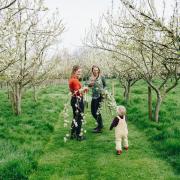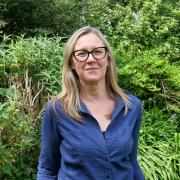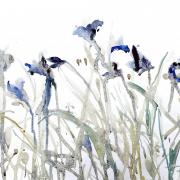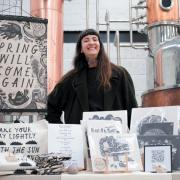We meet Daisy Rogers, who’s on a mission to bring art, along with all its associated benefits, to the community

Being a visionary is, let's face it, relatively commonplace. After all, who hasn't boasted a grand idea or ambitious theory at one time or another? Turning a concept into hands-on reality, on the other hand, requires far more escalation of intent and it is in refusing to be content with a plan buzzing round her head and instead transforming a dream into reality which gives Daisy Rogers the potential to be as successful with her community project as she is as an artist.
"Combining my skills and love of art, I've set up a company that is not just about profit making." Daisy's mindset, unconfined by expectations, is a laudable mix of creativity and entrepreneurship. "I've always wanted to do something where I feel I'm giving back. Art education can be seen as elitist but I want to make a difference to both sides of the community, income wise."
The hub of this project is a converted barn at Broughton Down Farm. Here art classes, workshops and art-related talks are on the agenda, with students benefiting from the Reggio Emilia ethos in which individuals are immersed in a professional environment during the learning process. The premises - accessible and located in quiet countryside - tick mental health boxes, too. No wonder she fell in love with the ex agricultural building. "The views are magnificent," she radiates, "great for plein air art lessons."
The idea first surfaced last autumn. Having previously enjoyed mentoring children, particularly those from disadvantaged backgrounds, Daisy "started small" running an adult class in her own home. This was followed by children's workshops. Their popularity fuelled her enthusiasm. Now she talks of annual exhibitions, in which students showcase their work alongside professional artists, and encouraging all elements of the community to come along without feeling awkward or intimidated. But what are the practicalities of her vision?
"In terms of people coming to the studio, at the moment paying students attend set courses. Outreach work is me going into the community, schools. I'd like each child to take part in a two hour workshop and learn how they can express their feelings through art without vocalising. The mental health of our younger generation is very important to me; I want them to realise they can find meditative time. My blueprint is to conduct workshops and for children to go away with a toughened plastic zip wallet containing all the materials they need to carry on at home. So this isn't just an intro but sowing seeds."

While inclusivity, personal wellbeing and immersion in an artistic task form the core of this project, money and status are sidelined. Neither do levels of ability and experience matter. In fact, I sense the more eclectic the mix, the better.
"I have had a range of people, from those who have never picked up a pencil to others whose parents were artists and trained in Florence. Their goals are very different. More experienced artists come to me to free up their technique. Background doesn't really matter; it will be exciting to see how everyone gets along."
Daisy is currently committed to undertake all teaching, although a number of local artists might come on board. Meanwhile she has set up a patrons' scheme and is busy "applying for every grant left, right and centre". Knowing her commercial awareness is as acute as her artistic integrity, what is she hoping to achieve in the first year or two?
"It's about establishing the business, making sure I can run the studio space and not have to be constantly looking at a spreadsheet. As far as outreach is concerned, I'd like to go into four primary schools per term. In year two I want additional training for myself to understand how best to manage and bring out the best in children with special education needs or who have been excluded, or can't access it for reasons of disability. I'd love to have an art therapist on board, too."
The annual cost of such investment in schools, including subsidised art kits, is likely to be around £25,000 which, "in the scheme of things is nothing given the potential grass roots benefits provided".
As a community interest company, the legal commitment is to invest any profits back into the business. That's financial profits, of course. Yet the value of this artist's vision and personal, emotional outlay, extends far deeper than any balance sheet.
"I've been cautious about whether the vision is realistic but also dogmatic. You have to go out and make things happen; that's how I approach life."
West Hampshire School of Art champions the prospect of enhancing individual skills and introducing the power of creativity to all sections of the area. Why not get on board? Whether you're an artist, school teacher or potential benefactor you, too, could be part of Daisy Rogers' vision.



























